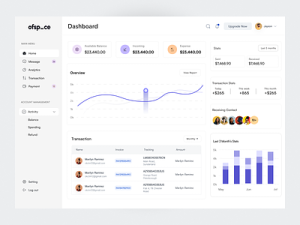What is Data Analytics?
Business Growth today is increasingly driven by data analytics—the systematic computational analysis of data and statistics. It involves using advanced tools and techniques to process raw data and convert it into actionable insights. Businesses rely on data analytics to make informed decisions, uncover trends, and improve overall performance.
In an era where data is generated at an unprecedented scale, the ability to analyze and interpret information has become essential for sustainable business growth. From understanding customer behavior to optimizing operational efficiency, data analytics offers a holistic view of key business functions, enabling smarter strategies and long-term success.
The Importance of Data Analytics for Business Growth
Data analytics plays a pivotal role in driving business growth for several reasons:
- Informed Decision-Making: With accurate data, businesses can make decisions based on facts rather than assumptions. This leads to better outcomes and minimizes risks.
- Identifying Opportunities: Data analytics helps businesses uncover new market trends, customer preferences, and potential areas for expansion.
- Improving Customer Experience: By analyzing customer feedback and behavior, companies can tailor their services to meet customer needs more effectively.
- Cost Efficiency: Data can reveal inefficiencies in operations, allowing businesses to optimize their resources and reduce costs.
Real-World Statistics
The impact of data analytics on business performance is backed by compelling statistics:
- 70% of companies report that data analytics has improved their decision-making process.
- 60% of businesses have seen increased customer satisfaction after implementing data-driven strategies.
- The big data analytics market is expected to reach a value of $430 billion by 2027.
How to Leverage Data Analytics for Your Business
If you want to harness the power of data analytics to drive growth, follow these actionable steps:
1. Define Your Goals
The first step in leveraging data analytics is to clearly define your business goals. Ask yourself what you want to achieve. Are you looking to increase sales, improve customer service, or reduce operational costs? Having clear objectives will guide your analysis and help you focus on relevant data.
2. Collect Relevant Data
The next step is gathering the right data. This can include:
- Sales Data: Track your sales performance over time to identify trends and patterns.
- Customer Feedback: Collect reviews, ratings, and surveys from customers to understand their experiences.
- Market Trends: Monitor industry changes, competitor actions, and emerging technologies that could impact your business.
The quality of your analysis depends on the quality of your data. Ensure that you collect accurate and relevant information from reliable sources.
3. Analyze the Data
Once you have gathered your data, it’s time to analyze it. You can use various tools such as Excel, Google Analytics, or specialized software like Tableau or Power BI. Here are some common analytical techniques:
- Descriptive Analytics: This involves summarizing historical data to understand what has happened in the past. It helps identify trends over time.
- Diagnostic Analytics: This technique seeks to explain why certain events occurred by examining relationships between variables.
- Predictive Analytics: Using statistical models and machine learning techniques, predictive analytics forecasts future outcomes based on historical data.
- Prescriptive Analytics: This goes a step further by providing recommendations on actions to take based on predictive insights.
4. Implement Changes
The insights gained from your analysis should lead to actionable changes in your business strategy. For example:
- If your analysis shows that customers prefer online shopping over in-store visits, consider enhancing your e-commerce platform.
- If certain products are underperforming, investigate customer feedback and make necessary adjustments in marketing or product features.
- If operational inefficiencies are identified, streamline processes or invest in automation technologies.
The key is to be proactive in implementing changes based on what the data reveals. This iterative approach ensures continuous improvement in your business operations.
5. Monitor Results
The final step is monitoring the results of the changes you implement. Use key performance indicators (KPIs) relevant to your goals to measure success over time. Regularly review these metrics and adjust your strategies as needed. Continuous monitoring allows you to stay agile and responsive in a dynamic market environment.
The Future of Data Analytics in Business
The future of data analytics looks promising as technology continues to evolve. With advancements in artificial intelligence (AI) and machine learning, businesses will be able to analyze larger datasets faster than ever before. Here are some trends shaping the future of data analytics:
- A.I.-Driven Insights: AI algorithms will enable more sophisticated analyses and predictions, providing businesses with deeper insights into customer behavior and market dynamics.
- Real-Time Analytics: As technology improves, businesses will increasingly rely on real-time data analysis for immediate decision-making rather than relying solely on historical data.
- User-Friendly Tools: The rise of no-code or low-code platforms will make it easier for non-technical users to access and analyze data without needing extensive programming knowledge.
- Sustainability Focus: Companies will leverage data analytics not only for profit but also for sustainability initiatives by tracking resource usage and environmental impact.
The Challenges of Implementing Data Analytics
While leveraging data analytics offers numerous benefits, it also comes with challenges that businesses must navigate:
- Lack of Expertise: Many organizations struggle with a shortage of skilled analysts who can interpret complex datasets effectively.
- Poor Data Quality: Inaccurate or incomplete data can lead to misleading insights and poor decision-making.
- Cultural Resistance: Employees may resist adopting a data-driven culture due to fear of change or lack of understanding about its benefits.
Tackling these challenges requires investment in training, technology, and fostering a culture that values data-driven decision-making across all levels of the organization.
Conclusion
Leveraging data analytics is not just a trend; it’s a necessity for modern businesses aiming for sustainable growth. If you want your business to thrive in today’s competitive landscape, start using data analytics today! By defining clear goals, collecting relevant data, analyzing it effectively, implementing changes based on insights, and continuously monitoring results, you can unlock new opportunities for growth and success!
“In God we trust; all others bring data.” – W. Edwards Deming










